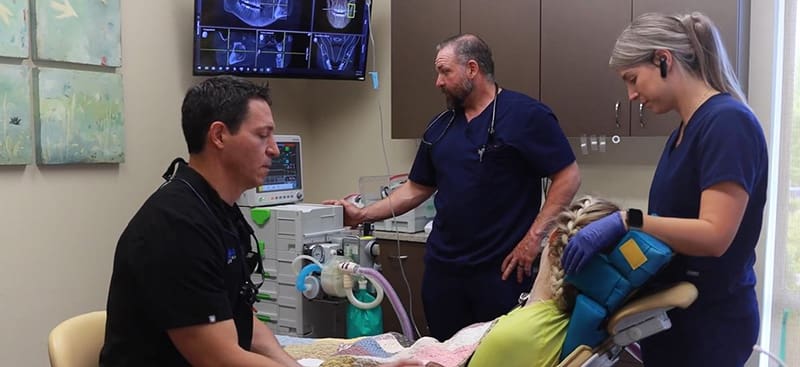
For many people, going to the dentist can be a nerve-wracking experience. Whether it’s due to a past traumatic visit, anxiety about pain, or fear of needles and drills, dental anxiety is more common than you might think. Fortunately, sedation dentistry offers a safe and effective way to make dental visits more comfortable and stress-free.
Sedation dentistry uses medication to help patients relax during dental procedures. It’s especially helpful for people with dental phobia, low pain tolerance, a strong gag reflex, or those needing extensive work in one appointment. If you avoid the dentist out of fear, sedation dentistry might be the solution you’ve been looking for.
How Does Sedation Dentistry Work?
Sedation can be used for everything from routine cleanings to complex procedures like root canals or oral surgery. The goal is to help you feel calm and at ease — and in some cases, you may not even remember much of the procedure afterward.
There are several levels of sedation, depending on your needs:
- Minimal Sedation – You’re awake but relaxed.
- Moderate Sedation (Conscious Sedation) – You may slur your words and not remember much of the procedure.
- Deep Sedation – You’re on the edge of consciousness but can still be awakened.
- General Anesthesia – You’re completely unconscious and won’t feel or remember anything.
Types of Sedation Used in Dentistry
- Nitrous Oxide (Laughing Gas):
This is the most common form of minimal sedation. Nitrous oxide is inhaled through a mask placed over your nose. It works quickly and helps you feel calm and lightheaded. The best part? The effects wear off just minutes after the gas is turned off, so you can drive yourself home afterward. - Oral Sedation:
This involves taking a prescribed pill, usually from the benzodiazepine family (like Halcion or Valium), about an hour before your appointment. It ranges from mild to moderate sedation, depending on the dose. You’ll feel drowsy but stay awake, and some people even fall lightly asleep during treatment. - IV Sedation:
Administered through a vein, IV sedation works quickly and allows the dentist to adjust the level of sedation as needed. This is typically used for more intense procedures or for patients with severe anxiety. - General Anesthesia:
Used in more complex cases, this form of sedation puts you completely to sleep. It is typically administered by a trained anesthesiologist in a hospital or specialized dental office.
Who Can Benefit from Sedation Dentistry?
Sedation dentistry is a great option for:
- Patients with dental anxiety or fear
- People with a low pain threshold
- Those with a strong gag reflex
- Individuals with difficulty sitting still for long periods
- Patients needing extensive or multiple dental procedures
- Children or adults with special needs
Your dentist will assess your medical history, current health, and anxiety level to determine the most appropriate sedation option.
Is Sedation Dentistry Safe?
Yes, when administered by a qualified dental professional, sedation dentistry is very safe. Dentists who provide sedation undergo specialized training and follow strict safety guidelines. During your procedure, your vital signs (heart rate, blood pressure, oxygen levels) will be closely monitored.
That said, it’s important to disclose your full medical history and any medications you’re taking to ensure the safest experience possible.
What to Expect After Sedation
After minimal sedation (like nitrous oxide), you’ll likely feel back to normal quickly. But with oral or IV sedation, you may feel drowsy for a few hours. It’s important to arrange for a trusted adult to drive you home and stay with you until the sedation fully wears off.
Don’t Let Fear Compromise Your Oral Health
Sedation dentistry has transformed the way people experience dental care. If fear or anxiety has kept you from getting the treatment you need, sedation options can help you feel relaxed, safe, and in control.
Don’t let dental fear compromise your oral health. Talk to your dentist about whether sedation dentistry is right for you — it could make all the difference in helping you achieve a healthy, confident smile.
